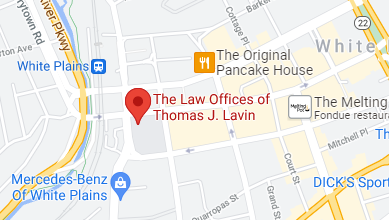What Is Lead Paint Poisoning?
Lead paint poisoning occurs when lead builds up in the body as someone is exposed to it. It can be dangerous, even deadly, as it can affect many of the body’s major organs. It’s particularly harsh on young children, as it can affect their physical and mental development. It’s often found in the paint in older buildings. New York City banned using lead paint in 1960, but many buildings are older than that and may still have lead paint on the walls.
Unfortunately, in many cases, lead poisoning doesn’t present noticeable symptoms until the lead levels are high. The following are some symptoms to watch for in adults and children.
Symptoms in Adults
- Joint, muscle, head, or abdominal pain
- Anemia
- Trouble with memory or concentrating on things
- High blood pressure
- Mood disorders (including conditions such as depression or mania)
- Lowered sperm count or abnormal sperm
- Pregnant women may experience miscarriage, premature birth, or stillborns
Symptoms in Children
- Abdominal pain, vomiting, or constipation
- Loss of appetite and related weight loss
- Developmental delays and learning disabilities
- Irritability that appears unrelated to ages and stages or other known conditions
- Loss of hearing
- Seizures
When a pregnant woman has lead poisoning, the newborn baby may have it, too. Some symptoms for the infant are premature birth, low birth weight, and slower-than-expected growth and development.
Which Jobs Can Have a Higher Risk of Exposure to Lead Paint?
While people can end up with lead poisoning if they live in older buildings with lead-based paint, many cases today happen while someone’s at work. Several industries can cause employees to be exposed to lead paint, including (but not limited to) the following.
- Construction (including demolitions and renovations of older buildings). Any work that involves tearing down or renovating older buildings may put workers in contact with lead paint. The Environmental Protection Agency (EPA) estimates that as many as 87% of homes built before 1940 still have lead paint, so working in those buildings poses a risk. That includes projects such as painting and plumbing.
- Manufacturing that involves lead products. While lead paints were banned for homes in the U.S. years ago, lead is still used to create the paint used for painting lines on roads.
- Bridge, tunnel, and road work. Many transportation structures and roads have lead paint in or on them, and lead exposure can occur when they need repair or replacement.
- Auto repair. Lead paint was phased out of auto manufacturing years ago, but given the popularity of older vehicles for those who like to work on them, it is still a risk.
- Foundry work, welding, and scrap metal recycling. Because of its durability and resistance to corrosion, lead paint is often found on items at foundries or welding shops.
- Mining. Many structures involved in mining operations use lead paint because of its versatility and durability.
What Rights Do I Have if I Was Exposed to Lead Paint at Work?
This can be tricky. Because of New York’s workers’ compensation laws, it’s possible that the employee who suffered lead poisoning at work won’t be allowed to sue the employer if they’re filing for workers’ compensation. However, that’s not always the case, depending on the specifics of the poisoning. The best way to determine if you can sue your employer is to talk to an experienced lead paint exposure attorney.
Even if the employer can’t be sued, there may be third parties involved who could be taken to court. This is not a complete list, but it provides some idea of who the third parties are to claim damages from.
- Site owners. If the site owner hasn’t taken steps to protect workers from lead paint exposure, they could be considered negligent.
- Product manufacturers. If the workers use protective gear such as respirators or protective clothing to work in areas with lead paint and the gear fails, they could cite the manufacturers for the failure.
- General contractors. The oversight of any project involving lead paint should include detailed plans for preventing exposure and protecting workers. They should also have employees undergo regular lead testing and send someone home if they reach specific lead levels.
- Subcontractors. These may be assigned duties by the general contractor for the prevention and testing of lead, and if they don’t do those duties, they could be liable.
What Should I Do if I’m Ill Because of Lead Paint Exposure?
Be sure to get a doctor’s diagnosis and treatment plan as soon as possible, even if your symptoms seem mild. Lead poisoning doesn’t always cause the victim physical problems until it’s advanced, so getting treatment as soon as possible is crucial.
Then call the Law Offices of Thomas Lavin at 718-829-7400 for a free case evaluation. Lead paint poisoning cases can be complex to handle in terms of claims and lawsuits. We can guide you through the specifics of your case to determine what might be the best approach to work toward the best possible outcomes.
One thing to avoid doing, if at all possible, is to begin discussions with your employer’s insurance representatives or lawyers. Their primary interest is the employer and how to proceed with paying out as little as possible in damages. They may try to convince you that a settlement offer they’ve made is as good as it’s going to get, when it’s possible that it’s much too low. Don’t negotiate with them. Instead, send all communications to your attorney.






